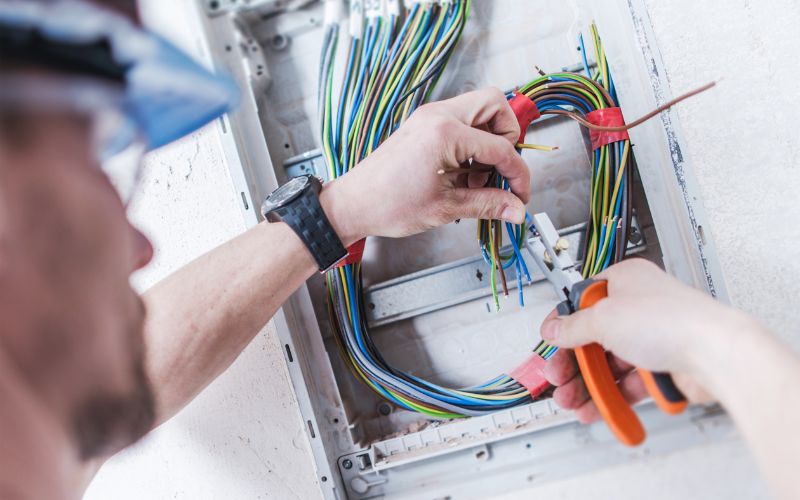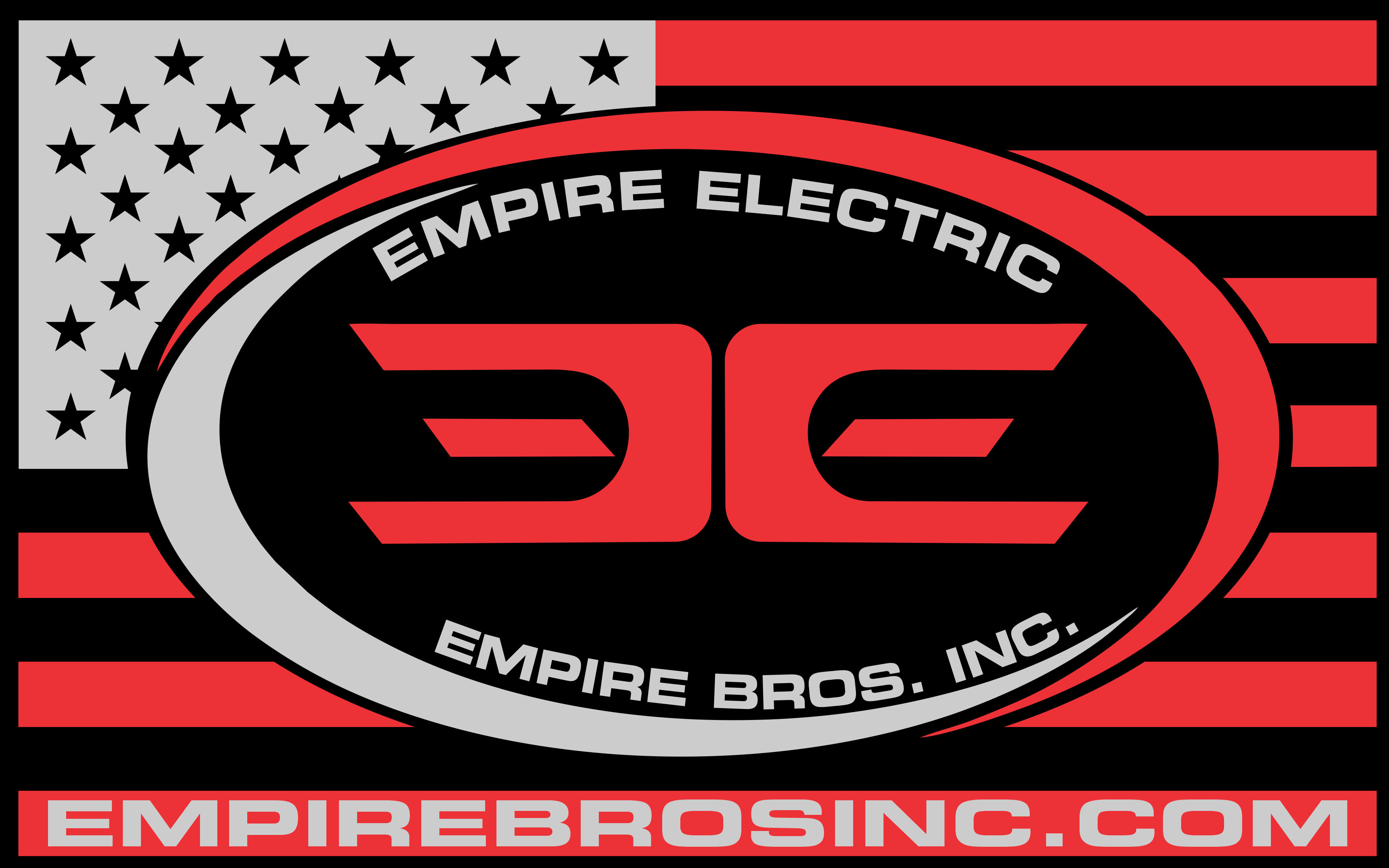Deciding whether to handle home rewiring yourself or hire a professional is more than just a simple choice; it involves balancing cost savings against potential risks. Many Hollister homeowners appreciate the satisfaction of completing a project on their own, but tackling electrical systems requires more than just enthusiasm—it demands precise skills and proper tools. In some cases, addressing rewiring might not just be about basic fixes; it may also involve making necessary upgrades to modernize your home and improve its safety standards.
To make an informed decision, it’s crucial to weigh the pros and cons carefully. Doing it yourself necessitates a deep understanding of electrical circuits and the ability to use tools such as voltage testers and multimeters. Yet even skilled DIY enthusiasts can hit unforeseen snags, which is where expert insights come in handy. Consider whether the time and effort for ongoing maintenance and repair of your home’s electrical system are feasible. This guide aims to equip you with essential tips so you can decide what’s best for your home, ensuring safety, efficiency, and quality every step of the way—from circuit mapping to installing outlets correctly.
Although DIY home rewiring may seem like a cost-effective solution, the complexity and safety risks associated with electrical work strongly recommend hiring a professional electrician. Professional electricians provide a reliable service, ensuring that all wiring within the house meets current safety standards, significantly reducing the risk of electrical hazards in your home.

DIY Home Rewiring: Skills and Tools Required
To successfully tackle a home rewiring project, homeowners need to possess a solid foundation in electrical theory and practice. This isn’t akin to hanging a picture frame; it requires a thoughtful approach and an understanding of how electricity flows through your home. The basic skills you should have include creating detailed circuit maps that outline your wiring plans, as well as the ability to handle switches properly, which often forms a fundamental part of maintenance work.
Additionally, grasping the concept of load capacities is vital because it helps prevent overloads that can lead to tripped circuits or worse—fires. Knowing the appropriate capacity is crucial, especially when planning for potential future upgrades to your electrical system or house circuits.
Now, understanding wire color codes becomes critical in this process. For example, identifying the hot wire (usually black or red) versus the neutral wire (typically white) is not just a mere technicality; it’s fundamental for ensuring safety during installation. Missteps in these basics can lead to dangerous consequences, making it essential for any DIYer to familiarize themselves with these concepts thoroughly before proceeding with any repair or rewiring tasks.
Essential Tools
- Wire Cutters and Strippers: Indispensable for cutting wires to precise lengths and removing their insulation safely, which is a frequent task during repair and service operations.
- Voltage Teste: A must-have device that checks whether a wire is live before you start working, ensuring that the electricity is off and preventing potential shocks, a critical step in any maintenance or upgrade task.
- Fish Tape: This handy tool assists in pulling wires through conduits or walls, especially useful in tight spaces where maneuverability is limited, making it an essential tool for any house rewiring project.
- Multimeter: Another critical tool that tests various electrical properties such as voltage, current, and resistance, allowing you to gather essential information about your circuits for ongoing maintenance and repair.
- Screwdriver Set: Necessary for installing outlets and switches neatly and securely—it’s important to use the right screwdriver type for each task, particularly when making upgrades to your home’s electrical system.
- Safety Gear: Always wear insulated gloves and goggles to protect yourself from electric shocks and flying debris during rewiring tasks, ensuring the safety of maintenance and repair activities.
Armed with both the requisite skills and proper tools, anyone can embark on the journey of DIY rewiring—but remember, this undertaking comes with its share of challenges. Understanding what those challenges are and whether your house would benefit from professional service will be crucial as we explore the upsides and downsides of handling rewiring yourself.
Pros and Cons of DIY Rewiring
Diving into the world of DIY rewiring can feel like both an adventure and a challenge. While the exciting benefits can inspire confidence, it’s important not to overlook the significant drawbacks. Let’s explore the pros first.
Pros
- Cost Savings: One of the most appealing aspects of taking on a rewiring project yourself is the potential for saving money. By eliminating labor costs, homeowners can often save hundreds, even thousands of dollars, depending on the scale of their project. This financial benefit makes it especially enticing for homeowners looking to stretch their budgets. However, even the smallest cable problem may require the expertise of an electrical contractor to resolve.
- Learning Opportunity: Engaging in DIY rewiring presents a wonderful chance to learn about electrical systems. Taking on this task can provide valuable knowledge and skills, making you more self-sufficient for future projects around your home. You’ll know how your electrical system functions, which can empower you in future home repairs. Nonetheless, for significant projects, such as an electrical upgrade, consulting with professionals like a Hollister electrician might be advisable.
- Immediate Control: Another advantage is the autonomy it offers. You can work at your own pace and schedule, avoiding delays caused by waiting for professionals to become available. This flexibility allows you to manage your project according to your personal needs. Nonetheless, scheduling a professional inspection after completing a project is a wise measure to ensure electrical safety.
However, while these positives paint an enticing picture, it’s essential to weigh them against some serious considerations that come with DIY rewiring.
Cons
- Safety Risks: The most critical drawback involves safety concerns. Electrical work carries inherent risks; improper wiring can lead to dangerous shocks or even fires. A momentary lapse in caution could have catastrophic outcomes, thus highlighting the importance of being meticulous during the process. A professional inspection by an electrical contractor can catch potential hazards before they become serious problems.
- Complexity: Electrical systems are not just straightforward wires; they are intricate networks that require a firm understanding to navigate effectively. Mistakes in wiring can lead to extensive and costly damage—both financially and structurally—if not addressed correctly. Making one wrong connection could trigger a series of unfortunate consequences.
- Legal Implications: Finally, there are potential legal repercussions associated with DIY rewiring. Local building codes regulate electrical work to meet safety standards. Failing to comply may result in fines or complications with insurance claims if something goes wrong post-project. So while you might save money upfront, those savings could vanish quickly if you’re forced to pay penalties later. Therefore, ensuring compliance through an electrical inspection is crucial.
These contrasting aspects reveal that although tackling rewiring projects yourself has its merits, the considerable risks may lead many homeowners to consider seeking professional assistance instead.
Benefits of Hiring a Professional Electrical
One of the foremost benefits of hiring a licensed electrician is their ability to navigate the complex landscape of electrical systems. They bring extensive knowledge and training to every project, leading to more reliable results. Whether it’s rewiring your entire home or simply installing new outlets, these experts know the local codes and standards necessary to ensure compliance with regulations. This understanding can help you avoid costly mistakes that could endanger your family or property. Professionals also guarantee the correct installation of every cable, thereby reducing potential risks.
Warranty and Insurance Coverage
Additionally, most professional electricians offer warranties on their work, providing extra protection against future problems. If issues arise down the line, you will typically receive prompt attention without incurring extra costs. This safety net not only provides reassurance, but it can also save you a significant amount of money on repairs or potential damage. If you invest in a major rewiring only to discover an unforeseen issue later, a warranty ensures your coverage. Often, these warranties cover a broad range of areas, ensuring that leaks or other minor issues don’t evolve into major problems.
A local resident in Hollister, Jane Doe, shared her experience: “Hiring a professional from Empire Bros Inc was the best decision. They handled everything flawlessly; I didn’t have to worry about compliance or safety.” Her testimony emphasizes how vital it is to trust professionals who know what they’re doing. It is best to leave questions about product quality and performance to those with the expertise to provide solid answers.
Knowledge of Safety Protocols
Beyond warranties and technical skills, experienced electricians possess critical knowledge concerning safety protocols. They know how to identify and mitigate risks that an untrained individual may overlook. For example, they understand the importance of grounding wiring correctly and can assess whether your existing electrical system meets modern safety standards. Proper grounding prevents electrical shocks and reduces fire hazards, making it an essential aspect of any electrical work, thereby improving your home’s overall power and safety performance.
Recognizing these benefits clarifies why many homeowners opt for expert services instead of attempting DIY repairs. With this foundation of understanding, we can move on to explore the financial implications of choosing between self-installation and professional help, which is a crucial question for many homeowners considering rewiring projects.
Cost Comparison: DIY vs. Professional Services
Breaking down the costs is essential to understand where your money goes and what value you’re getting in return. When it comes to home rewiring, it’s not just about initial expenses; numerous factors come into play that can affect your overall financial commitment. Understanding these will give you the power to make informed decisions.
Cost Breakdown
To illustrate this further, consider the following detailed breakdown of expected costs involved in both DIY and professional rewiring projects. While they seem straightforward, the nuances of each category reveal much about the true costs associated with DIY work. It is crucial to assess the quality and durability of products you purchase for DIY projects to ensure lasting performance.
As you can see from the table, while DIY seems like a more affordable option at first glance—with total costs ranging from about $350 to $950—it’s crucial to consider what those numbers imply. The expense of basic tools alone can severely inflate your overall costs, especially if they are specialized items that you may only use once or twice. Furthermore, any unexpected leaks or faulty installations can dramatically increase costs.
Professional services typically come with higher upfront costs, ranging from $600 to $2000, but they manage many tasks entirely by experienced hands. Not only does this include labor, but it also gives you peace of mind knowing that every detail adheres to legal codes and safety standards. These professionals can often foresee potential problem areas, reducing the risk of errors that could lead to expensive fixes.
The financial implications of these choices extend beyond immediate costs, intertwining with insurance and possible liabilities as well. Understanding these dynamics opens the door to critical aspects of home wiring compliance and safe practices. An investment in professional services can offer the power of long-term savings and reliability.

Legal and Safety Considerations
When it comes to home rewiring in Hollister, compliance with local codes and safety standards is non-negotiable; ignorance isn’t bliss here, as it can lead to severe repercussions. The National Electrical Code (NEC) lays down a foundational set of regulations meant to protect you and your home, but local nuances may exist that might not be immediately apparent. Ensuring compliance not only protects your investment but boosts the performance and longevity of your home’s electrical system. While you’re reading through national guidelines, it’s equally crucial to investigate the specific codes that apply to your area. During the planning phase of your projects, you must consider the unique challenges and variables that each location presents.
Electrical Codes and Permits
Local electrical codes may require additional considerations or modifications to what the NEC prescribes. For instance, Hollister’s building department may have guidelines on wire types, circuit specifications, or even specific safety measures unique to the region’s climate and typical housing structures. Each municipality’s rules structure helps ensure that electricians effectively meet unique local conditions and hazards, providing tailored solutions for your environment.
Obtaining the required permits not only safeguards your legal rights but also guarantees professional inspection of your work. It’s best practice to check with Hollister’s building department before you begin any significant electrical work, as their range of requirements can vary. This type of due diligence becomes even more critical if an accident arises later; without permits, liability could fall squarely on your shoulders, leaving you and your customers vulnerable.
One must weigh the risks versus benefits of undertaking such an endeavor yourself. While saving money is appealing, how do those savings compare against potential fines or losses from fires? Focusing on safety and legal compliance could very well lead to peace of mind as you consider your options around home rewiring. The structure of your plan should incorporate both short-term savings and long-term safety.
As you navigate these considerations, it’s essential to equip yourself with practical strategies that enhance your approach to home improvement projects while ensuring safety and compliance. Let’s look at some invaluable advice tailored for homeowners seeking guidance in these matters that could lead to effective solutions.
Essential Tips for Hollister Homeowners
For those living in Hollister, it’s crucial to familiarize yourself with the local environment and requirements when undertaking home rewiring projects. One significant tip revolves around seeking local expertise; connecting with electricians or contractors who are well-versed in Hollister’s regulations can make your life much easier. They not only understand what codes to follow, but they also have relationships with local inspectors and can guide you to the right resources for your specific space and range of needs.
Seek Local Expertise
Don’t underestimate the value of local network connections. Engage with professionals in your area; they will provide tailored advice on your rewiring needs, help you navigate the solutions available, and guide you through specific local regulations that may apply. Personalized insights can significantly ease the process, allowing you to tackle unique challenges that might arise in Hollister’s distinct climate and geographical context while also catering to the needs of your customers.
After securing expert guidance, it is critical to focus on the project’s compliance aspects.
Permits and Inspections
Before diving into rewiring, ensure that you apply for all necessary permits from the local authorities. This precaution is vital not just for compliance but also to avoid unexpected complications down the line, ensuring that you have peace of mind in managing your space effectively. If you don’t have the necessary permits, you might have to redo the work or face fines. Furthermore, scheduling inspections at key stages of your project helps confirm that everything is up to code and works as required. Think of this step as not only a legal safeguard but also an opportunity for peace of mind throughout your renovation process.
Finally, engaging with fellow homeowners can yield invaluable insights. By joining online forums or local homeowner associations, you can gain access to shared experiences that shed light on common pitfalls and effective strategies. You’ll frequently find others discussing practical tips drawn from firsthand experience that can guide you through your rewiring project more smoothly.
Armed with these tips, Hollister homeowners can navigate the complexities of home rewiring with greater confidence. Understanding regulations, leveraging local expertise, and participating in community conversations will pave the way for a successful project while ensuring your home remains safe and compliant.
For personalized assistance with your home rewiring needs, contact us at Empire Bros. Inc. or call (831) 359-6269 today!
